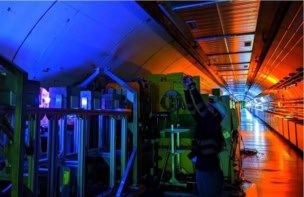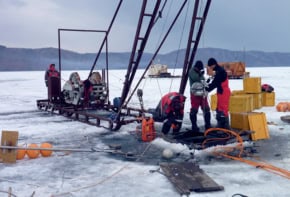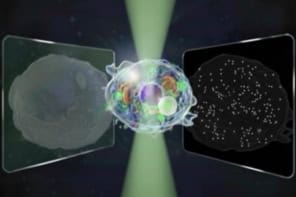
Researchers in China say that they are the first to use cosmic-ray muography to monitor the region surrounding a tunnel. Described as a lightweight, robust and affordable scintillator setup, the technology was developed by Kim Siang Khaw at Shanghai Jiao Tong University and colleagues. They hope that their approach could provide a reliable and non-invasive method for the real-time monitoring of subterranean infrastructure.
Monitoring the structural health of tunnels and other underground infrastructure is challenging because of the lack of access. Inspection often relies on techniques such as borehole drilling, sonar scanning, and multibeam echo sounders to determine when maintenance is needed. These methods can be invasive, low resolution and involve costly and disruptive shutdowns. As a result there is often a trade-off between the quality of inspections and the frequency at which they are done.
This applies to the Shanghai Outer Ring Tunnel: a major travel artery in China’s largest city, which runs for almost 3 km beneath the Huangpu River. Completed in 2023, the submerged section of the tunnel is immersed in water-saturated sediment, creating a unique set of challenges for structural inspection.
Time-varying stresses
In particular, different layers of sediment surrounding the tunnel can vary widely in their density, permeability, and cohesion. As they build up above the tunnel, they can impart uneven, time-varying stresses, making it incredibly challenging for existing techniques to accurately assess when maintenance is needed.
To address these challenges, a multi-disciplinary team was formed to explore possible solutions. “During these talks, the [Shanghai Municipal Bureau of Planning and Natural Resources] emphasized the practical challenges of monitoring sediment build-up around critical infrastructure, such as the Shanghai Outer Ring Tunnel, without causing disruptive and costly shutdowns,” Khaw describes.
Among the most promising solutions they discussed was muography, which involves detecting the muons created when high-energy cosmic rays interact with Earth’s upper atmosphere. These muons can penetrate deep beneath Earth’s surface and are absorbed at highly predictable rates depending on the density of the material they pass through.
A simple version of muography involves placing a muon detector on the surface of an object and another detector beneath the object. By comparing the muon fluxes in the two detectors, the density of the object can be determined. By measuring the flux attenuation along different paths through the object, an image of the interior density of the object can be obtained.
Muography has been used for several decades in areas as diverse as archaeology, volcanology and monitoring riverbanks. So far, however, its potential for monitoring underground infrastructure has gone largely untapped.
“We took this ‘old-school’ technique and pioneered its use in a completely new scenario: dynamically monitoring low-density, watery sediment build-up above a submerged, operational tunnel,” Khaw explains. “Our approach was not just in the hardware, but in integrating the detector data with a simplified tunnel model and validating it against environmental factors like river tides.”
With its durable, lightweight, and affordable design, the scintillator features a dual-layer configuration that suppresses background noise while capturing cosmic muons over a broad range of angles. Crucially, it is portable and could be discreetly positioned inside an underground tunnel to carry out real-time measurements, even as traffic flows.
Sediment profiles
To test the design, Khaw’s team took measurements along the full length of the Shanghai Outer Ring Tunnel while it was undergoing maintenance; allowing them to map out a profile of the sediment surrounding the tunnel. They then compared their muon flux measurements with model predictions based on sediment profiles for the Huangpu River measured in previous years. They were pleased to obtain results that were better than anticipated.

Earth, wind and water: how cosmic muons are helping to study volcanoes, cyclones and more
“We didn’t know the actual tidal height until we completed the measurement and checked tidal gauge data,” Khaw describes. “The most surprising and exciting discovery was a clear anti-correlation between muon flux and the tidal height of the Huangpu River.” Unexpectedly, the detector was also highly effective at measuring the real-time height of water above the tunnel, with its detected flux closely following the ebb and flow of the tides.
Reassuringly, the team’s measurements confirmed that there are no as-yet unmapped obstructions or gaps in the sediment above the tunnel thereby confirming the structure’s safety.
“Additionally, we have effectively shown a dual-purpose technology: it offers a reliable, non-invasive method for sediment monitoring and also reveals a new technique for tidal monitoring,” says Khaw. “This opens the possibility of using muon detectors as multi-functional sensors for comprehensive urban infrastructure and environmental oversight.”
The research is described in the Journal of Applied Physics.



